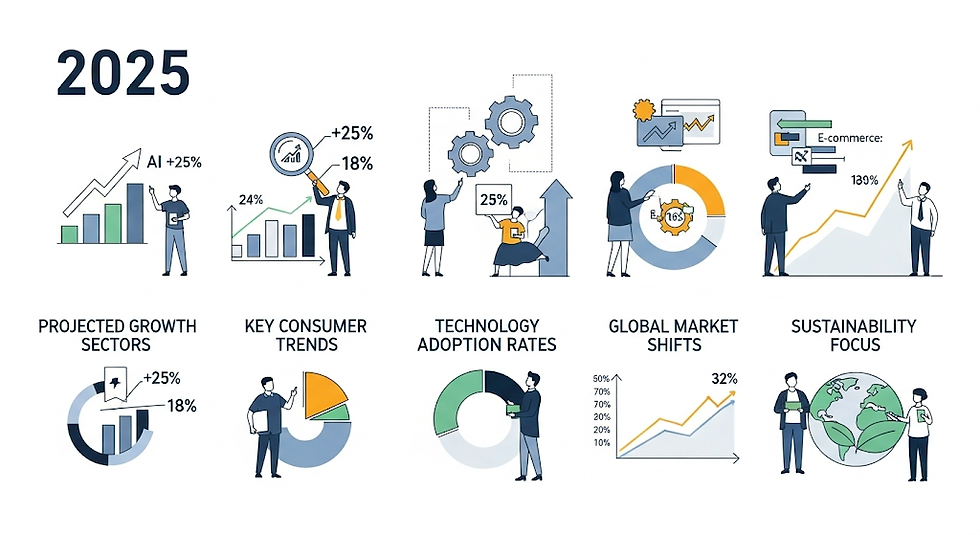Sourcing of Hardware and Software in Greater China: Opportunities, Challenges, and Key Insights
- Jayant Upadhyaya
- Aug 22
- 3 min read
Updated: Sep 11

1. Introduction
Greater China — encompassing Mainland China, Hong Kong, Macau, and Taiwan — remains a dominant force in global technology sourcing. In 2024, the region accounted for over 33% of the world’s electronics exports and nearly 15% of global software outsourcing contracts. Whether you’re sourcing semiconductors, consumer electronics, industrial automation parts, or enterprise software development, the Greater China region offers unmatched scale, speed, and cost competitiveness.
2. Understanding the Greater China Region
Greater China refers to:
Mainland China – manufacturing and software development hub.
Hong Kong – gateway for finance, logistics, and international business law.
Taiwan – leading semiconductor and chip design producer (TSMC, MediaTek).
Macau – smaller role, mainly in trade and logistics facilitation.
The combined market size for IT hardware and software exports from Greater China exceeded $1.2 trillion USD in 2024.
3. Why Greater China is a Sourcing Powerhouse
Several factors make this region critical for global technology sourcing:
Manufacturing Scale – Shenzhen alone hosts over 30,000 electronics manufacturers.
Talent Availability – Over 8 million STEM graduates annually in China.
Vertical Integration – Suppliers, logistics, assembly, and testing in one ecosystem.
Government Support – Subsidies for high-tech manufacturing and R&D.
4. Key Hardware Categories Sourced from Greater China
Greater China is the world’s largest exporter of electronics, covering:
Consumer Electronics – Smartphones, laptops, wearables.
Industrial Equipment – Sensors, robotics, CNC machines.
Semiconductors – Taiwan’s TSMC supplies over 60% of the world’s advanced chips.
Telecom Equipment – Huawei, ZTE dominate global 5G infrastructure.
Electric Vehicle Components – Battery cells, charging systems.
2024 Export Data: China exported $938 billion worth of electronics and electrical machinery, a 5.4% year-over-year growth.
5. Leading Software Development Hubs in Greater China
While traditionally hardware-focused, Greater China’s software sector is booming:
Shenzhen – Embedded software for IoT devices.
Beijing – AI, fintech, and SaaS solutions.
Shanghai – Enterprise ERP, cloud, and fintech applications.
Taipei – Chip design software, industrial automation systems.
Hong Kong – Blockchain, fintech, and compliance software.
Notable Fact: In 2024, China’s software exports reached $30 billion, with AI-related solutions growing 25% annually.
6. 2025 Market Statistics & Trends

Here’s what recent research reveals:
Hardware Sourcing Share – Greater China supplies over 35% of global IT hardware.
Software Growth – Cloud-based solutions from China expected to grow CAGR 19% (2025–2030).
Shift to High-End Manufacturing – China aims for 70% semiconductor self-sufficiency by 2030.
AI & IoT Boom – Embedded AI systems from Greater China expected to hit $85 billion by 2028.
7. Advantages of Sourcing from Greater China
Cost Efficiency – Competitive labor costs with advanced automation.
Mass Production Capability – Rapid scaling from prototype to millions of units.
High Supplier Density – Reduced supply chain risk due to proximity of component makers.
Customization – Strong ability to tailor hardware/software to client needs.
8. Risks & Challenges in Sourcing
Geopolitical Tensions – US-China trade restrictions on advanced semiconductors.
Intellectual Property Concerns – IP theft risks remain in some segments.
Quality Control Variations – Need for strict supplier vetting.
Currency Fluctuations – RMB valuation affects contract pricing.
9. The Role of Government Policies and Trade Relations
China’s 14th Five-Year Plan focuses on self-reliance in key tech.
Hong Kong offers favorable tax structures for tech firms.
Taiwan’s “Chip Shield” maintains its dominance in global semiconductor supply.
Trade agreements with ASEAN and RCEP nations reduce sourcing tariffs.
10. Best Practices for Sourcing Hardware and Software

Supplier Audits – Perform regular on-site inspections.
Diversification – Avoid overreliance on a single supplier.
Quality Certifications – Look for ISO 9001, CE, RoHS compliance.
Local Partnerships – Use Hong Kong-based intermediaries for smoother transactions.
IP Protection Contracts – Register patents/trademarks in Mainland China & Hong Kong.
11. Case Studies of Successful Sourcing Partnerships
Apple & Foxconn (Taiwan/Mainland) – High-volume production with stringent quality control.
Tesla in Shanghai – EV production sourcing from local battery suppliers.
HP & Compal (Taiwan) – Laptops produced at scale for global distribution.
12. Future Outlook (2025–2030)
AI-Driven Manufacturing – Fully automated production lines.
Nearshoring Risk – Western companies may shift some production closer to home, but scale advantage will keep Greater China dominant.
Green Manufacturing – China’s $100B investment in renewable energy will influence tech production sustainability.
13. Conclusion : Hardware and Software in Greater China
Sourcing hardware and software from Greater China offers unmatched scale, cost benefits, and technology expertise, but it requires careful risk management. Companies that adopt diversified sourcing strategies, prioritize IP protection, and leverage the region’s innovation ecosystem can achieve sustainable competitive advantages.







Comments